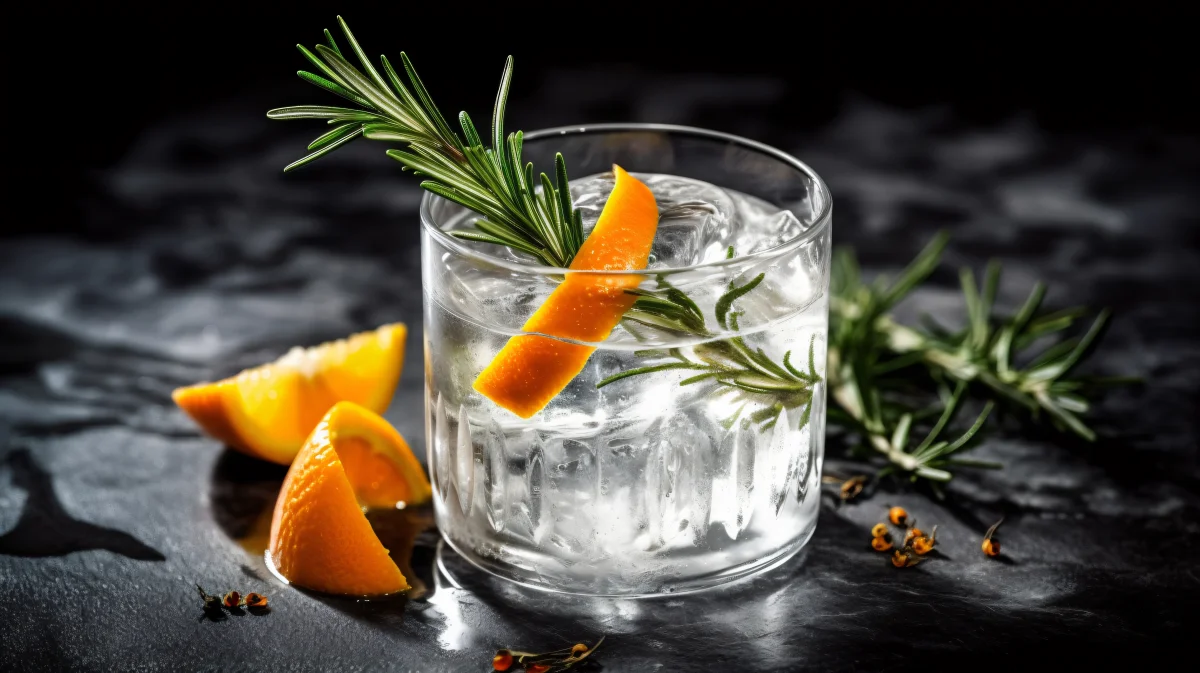
Introduction: The Renaissance of British Gin
If you were to wander into a British pub circa 1990 and order a gin and tonic, you'd likely receive a lukewarm glass of Gordon's with a sad slice of lemon and a splash of whatever tonic happened to be attached to the soda gun. Fast forward to today, and that same order might prompt your bartender to ask which of their 30 gins you'd prefer, which of their 8 tonics would complement it best, and whether you'd like your garnish to be pink peppercorns, rosemary, cucumber, or perhaps a theatrical puff of aromatic smoke.
Britain is experiencing its second gin craze. Unlike the first—an 18th-century bender that nearly dissolved London society in a pool of cheap, questionable spirits—this modern renaissance celebrates craft, quality, and creativity. With over 440 distilleries now operating across the British Isles (quadruple the number from just a decade ago), it's become delightfully impossible to keep track of them all.
This guide won't attempt the fool's errand of cataloging every British gin in existence. Instead, we'll journey through the key styles, regions, and distilleries that define this spirited landscape, offering you a compass with which to navigate your own gin adventures.
London Dry: The Quintessential British Style
Despite what the name suggests, London Dry gins don't need to be made in London—though many stellar examples still are. What defines this style is a production method: distilled to at least 70% ABV, containing no artificial flavors, and with minimal sweeteners added after distillation.
London Dry is the style that built Britain's gin reputation, characterized by pronounced juniper notes balanced with citrus and a medley of botanicals. The resulting spirit should be dry, crisp, and clean—perfect for that G&T or classic martini.
Notable London Dry Gins:
-
Beefeater: The archetypal London Dry, still made in the heart of the capital using a recipe dating back to the 1860s. The nine botanicals (including Seville orange peel and lemon peel alongside the requisite juniper) create a balanced, classic profile that's both accessible and authentically gin-like.
-
Sipsmith: The plucky upstart that changed everything. When Sipsmith opened in 2009, it became London's first copper-pot distillery in nearly two centuries, effectively lighting the fuse on Britain's craft gin explosion. Their London Dry marries traditional juniper forwardness with a floral complexity and remarkably smooth finish.
-
Tanqueray No. Ten: The luxury offering from the historic Tanqueray brand, distilled with fresh citrus fruits rather than dried peels. The result is extraordinarily vibrant and has made it a bartender favorite for martinis.
Plymouth Gin: A Protected Style
Unlike London Dry, Plymouth Gin truly can only come from one place: Plymouth. More specifically, it can only come from one distillery—Black Friars Distillery, operating since 1793. Plymouth is geographically protected (like Champagne), and offers a softer, slightly earthy character compared to London Dry, with more citrus notes and subtle cardamom warmth.
The distillery's flagship product, Plymouth Gin, sits at 41.2% ABV and makes an exceptional martini. Their higher-proof Navy Strength (57% ABV) is a beast worth taming—it delivers an intensity that stands up beautifully in complex cocktails.
Navy Strength: Not for the Faint-Hearted
Speaking of naval connections, "Navy Strength" gins clock in at 57% ABV or higher—supposedly the proof at which spilled gin wouldn't prevent gunpowder from igniting if the two happened to mix on a warship. Whether that's historical fact or clever marketing hardly matters when you're sipping these bold, characterful spirits.
Beyond the aforementioned Plymouth Navy Strength, look out for:
-
Hayman's Royal Dock: A historical recreation of the gin supplied to the Royal Navy, with a robust juniper profile that doesn't get lost even when heavily diluted.
-
Edinburgh Cannonball Navy Strength Gin: Double the juniper, double the Szechuan pepper, and a remarkable 57.2% ABV make this a gin that demands attention.
Old Tom: The Historical Sweet Spot
In between the unregulated madness of the first gin craze and the refined London Dry style lies Old Tom—a slightly sweetened gin popular in the 18th and 19th centuries. After nearly disappearing, it's been revived by craft distillers seeking to recreate historical cocktail recipes.
Old Tom gins typically feature added sugar (or sometimes licorice) after distillation, creating a rounder, more approachable spirit that works beautifully in a Martinez or Tom Collins.
-
Hayman's Old Tom: Based on a family recipe from the 1870s, this is slightly sweet with hints of citrus and a pronounced juniper character.
-
Jensen's Old Tom: Created by distiller Christian Jensen after discovering an old bottle in a London cellar, this recreation uses only natural botanicals to achieve its subtle sweetness.
New Western/Contemporary Gins: Breaking the Rules
The category that's most expanded in recent years is what's variously called "New Western," "Contemporary," or sometimes just "Modern" gin. These spirits still contain juniper (they must, to be called gin), but it's no longer the starring character. Instead, other botanicals take center stage, creating gins that range from floral to spicy, fruity to herbal.
Notable Contemporary British Gins:
-
Hendrick's: Though now ubiquitous, this Scottish gin was revolutionary when launched in 1999. Its cucumber and rose petal-infused profile created an entirely new gin vocabulary and inspired countless imitators.
-
The Botanist: From Islay (better known for peaty Scotch), this gin incorporates 22 hand-foraged island botanicals alongside traditional ingredients. The result is a deeply complex spirit with subtle herbal notes that reveal themselves differently with each sip.
-
Silent Pool: From the Surrey Hills, this gin's striking teal bottle houses a floral, slightly citrusy spirit featuring 24 botanicals, including local honey, lavender, and chamomile.
Regional Gin: The Taste of Place
Just as Britain's landscape varies from windswept coastlines to gentle rolling hills, gins from different regions have begun to develop their own sense of place—what the wine world calls "terroir."
Scottish Gins:
Scotland now boasts over 70 gin distilleries—more than any other country in the UK. Scottish gins often feature local botanicals like heather, pine needles, or seaweed.
-
Edinburgh Gin: Their core range showcases traditional botanicals, but their seasonal editions often incorporate Scottish fruits and plants.
-
Isle of Harris Gin: Featuring sugar kelp harvested from local waters, this maritime gin comes in one of the most beautiful bottles in the business.
Welsh Gins:
The Welsh gin scene is smaller but growing rapidly, with an emphasis on local ingredients and traditional distilling techniques.
-
Dyfi Original: Made in the UNESCO Dyfi Biosphere Reserve, this gin includes foraged botanicals from the surrounding unspoiled ecosystem.
-
Aber Falls: From Snowdonia, featuring Welsh mountain water and local botanicals.
English Regional Gins:
Beyond London, English distilleries are creating expressions that speak to their local environments:
-
Cotswolds Dry Gin: Cloudy when cold (due to high essential oil content), this gin bursts with lavender and bay leaf notes from the picturesque region.
-
Mermaid Gin: From the Isle of Wight, incorporating rock samphire harvested from the island's cliffs.
Flavored and Fruit Gins: Beyond Juniper
Purists may scoff, but flavored gins have become enormously popular, particularly those infused with berries or rhubarb. While many are simply gin liqueurs (lower alcohol, higher sugar), some maintain their full strength while introducing bold new flavors.
-
Warner's Rhubarb Gin: Started the rhubarb gin craze using actual pressed rhubarb juice rather than artificial flavoring, creating a genuinely garden-fresh profile.
-
Sipsmith Sloe Gin: Unlike many commercial sloe gins, this craft version steeps wild sloe berries in their London Dry for months, resulting in a complex balance of sweet, tart, and dry notes.
The Future: Sustainability and Innovation
As the gin boom continues, many British distillers are looking toward sustainability. From Nc'nean's fully organic distillery powered by renewable energy to Cooper King's climate-positive gin production, environmental concerns are shaping the industry's future.
Innovation continues apace as well. Some distillers are experimenting with unusual botanicals like sansho pepper or yuzu, while others explore alternative production methods such as vacuum distillation or ultrasonic maceration.
Finding Your Perfect British Gin
With such variety available, how do you find your ideal British gin? Here's a simple approach:
-
Consider your preferred drinking style: For classic cocktails, London Dry rarely disappoints. For sipping neat, try something complex like The Botanist or Plymouth. For a G&T on a summer afternoon, perhaps a more contemporary, floral style.
-
Start with the classics: Before diving into obscure craft offerings, try Beefeater, Plymouth, or Tanqueray to establish your botanical baseline.
-
Attend tastings: Many distilleries offer tours and tastings, and good bars often host gin flights.
-
Take notes: What did you like? What didn't work for you? Was it too juniper-forward? Not juniper-forward enough? Too floral? Too spicy?
-
Don't be swayed by packaging alone: Some of the most beautifully bottled gins are style over substance, while some unassuming bottles hold remarkable spirits.
Conclusion: A Spirit of British Innovation
British gin's renaissance speaks to more than just drinking trends—it represents a return to artisanal production, local ingredients, and creative risk-taking across the British Isles. Whether you prefer a classic London Dry in a crisp martini or an experimental botanical blend with an artisanal tonic, there's never been a better time to explore the juniper-scented landscape of British gin.
The spirit that was once derided as "mother's ruin" has become one of Britain's proudest exports and most innovative culinary achievements. So raise a glass to the distillers, botanists, and dreamers who have transformed British gin from a historical footnote to a contemporary classic—and then pour yourself another to toast whatever wonderful directions it takes next.
Author's Note: This guide was compiled in April 2025 and reflects the British gin market at that time. Given the pace of new distillery openings, some newcomers may have emerged since publication. All the more reason to continue your gin exploration!

